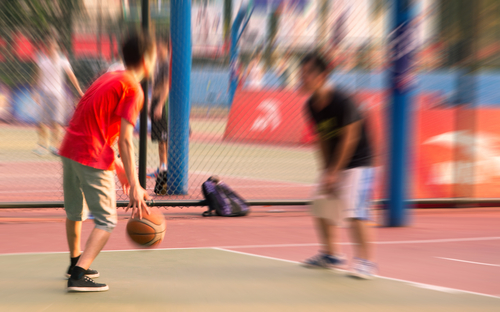Researchers Determine Adolescents With Cystic Fibrosis Breathe Adequately During Exercise

 Researchers in the Netherlands found that although adolescents with cystic fibrosis had a higher breathing response to exercise, they were able to breathe adequately enough to be able to perform a moderate exercise task.
Researchers in the Netherlands found that although adolescents with cystic fibrosis had a higher breathing response to exercise, they were able to breathe adequately enough to be able to perform a moderate exercise task.
Cystic fibrosis is one of the most commonly occurring chronic diseases of the lungs in children and young adults, and can be a life-threatening disorder.
Breathing is often difficult for most people with cystic fibrosis, due to a sticky mucus can build up in the lungs. People with the disease may not inhale enough oxygen or exhale enough carbon dioxide (CO2) during the course of exercising.
Exercise can be particularly beneficial to people with cystic fibrosis, because it may slow lung function decline, and help clear lung mucus, which may allow for easier breathing. The majority of people with cystic fibrosis do exercise,primarily for this reason.
[adrotate group=”1″]
More information is needed about how adolescents with cystic fibrosis respond to exercise, in order to determine whether exercise is recommended in these individuals or should be avoided.
Led by Dr. Bart C Bongers of Maastricht University, the researchers studied twenty-two adolescents with cystic fibrosis (12 boys and 10 girls) and compared them to 22 healthy subjects who did not have cystic fibrosis.
According to the study authors, “Insight in the breathing pattern during progressive exercise in adolescents with CF in a broad spectrum of lung function deterioration, as well as the adequacy of this ventilatory response for carbon dioxide (CO2) exhalation, is clinically relevant for future therapeutic interventions.”
Understanding how adolescents with cystic fibrosis breathe during exercise (ventilation) could help clinicians give advice regarding whether to exercise or what type of exercise to engage in.
The scientists studied the ventilatory response (breathing) during a standard exercise test called the progressive cardiopulmonary exercise test (CPET). They also studied whether the adolescents with cystic fibrosis were exhaling enough carbon dioxide during exercise.
In this study, the researchers found “an exaggerated, but adequate ventilatory response to exercise for CO2 exhalation in patients with CF with mild-to-moderate airway obstruction.”
The subjects had a higher demand for oxygen and breathing but were still able to adequately produce CO2, a normal consequence of breathing. Future studies could focus on individuals with a more advanced disease state to see if they are adequately exhaling carbon dioxide. Additional studies may also focus on whether exercise stops the decline in lung function that occurs in cystic fibrosis.







